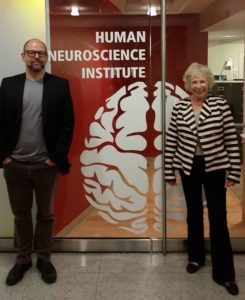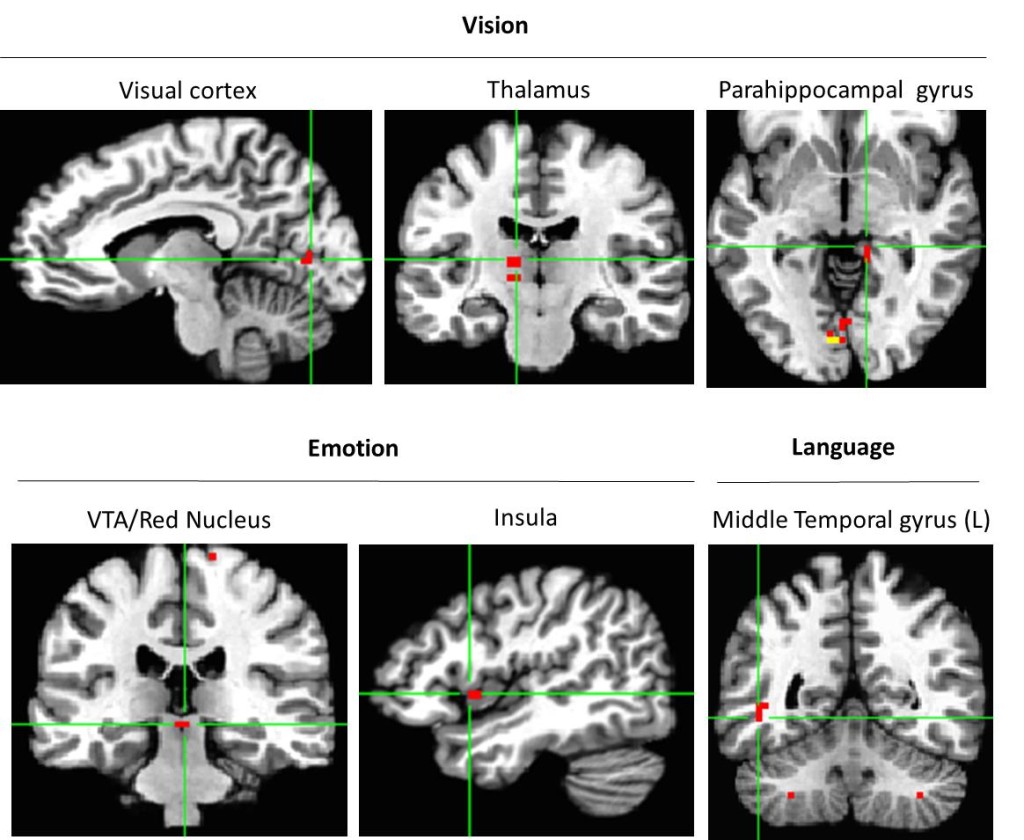We have been busy this year! Generosity from people like you has helped us change lives, advance research, and spread the word. Read below to find out more about specific projects and programs we funded in 2016, and learn about what we have in store for 2017.
Research At Cornell University
ISF awarded Cornell University neuroscientist, Dr. Adam Anderson, and his team of researchers at the Cognition and Affect Lab an ISF Research Grant to support their current brain imaging research. Dr. Anderson and his team are using fMRI to show that colors alter the speed with which visual stimuli are processed and perceived. They are examining the brain bases of this finding with the hope of providing objective evidence for a widespread role of color in shaping visual sensory cortical processing and its influences on higher-order brain regions. By influencing how visual sensory cortices communicate with higher brain regions, color filters may regulate brain activity patterns supporting various forms of high level cognition.
15 Individual Scholarship Awards
ISF awarded aid scholarships to 15 individuals this year. These scholarships provided diagnostic testing and Irlen Spectral Filters for individuals who would otherwise not be able to afford Irlen services. Among our group of 2016 scholarship recipients, we had 5 youth from the juvenile justice system, a former law enforcement officer whose on the job brain injury resulted in migraines, vertigo, and seizures that prevent her from working, and a high school student who missed over 50 days of school this year because of migraines and extreme fatigue caused by light sensitivity.
New Pilot School in Philadelphia
ISF awarded an Irlen Pilot School Program Grant to the Mastery Charter School Pickett Campus in Philadelphia, PA. Mastery Charter services a particularly high percentage of at-risk students in grades 6-12, with over 25% of the student body identified as having some type of specific learning disability. As an Irlen Pilot School, Master Charter will implement screening for Irlen Syndrome and provide colored overlays to students who require intervention. Student progress and improvement will be tracked and analyzed over a 1 year intervention period. Find out more about our pilot school program.
Outreach in Ghana
ISF partnered with the nonprofit, CLED – Campaign for Learning Disabilities, to educate teachers in Ghana about Irlen Syndrome and strategies for supporting students with the condition. CLED-Campaign for Learning Disabilities is a grassroot NGO with the goal of helping children with learning disabilities and co-occurring difficulties to improve their learning and reach their potential so that they can become valued members of their community. CLED trains parents, teachers, and communities on different subjects related to the needs of children with learning disabilities and co-occurring difficulties. We are excited about this new international partnership, and the opportunity to bring solutions for Irlen Syndrome to school children in Ghana.
Our Plans for 2017
In the coming year, ISF plans to double the number of scholarships awarded in 2016, add another Irlen Pilot School to service and support an entire student body, and increase our support of cutting-edge research that will help make assistance for Irlen Syndrome more available. You can make a difference too. Did you know that a $5 gift to ISF is enough to provide colored overlays for 2 children? Your generosity makes our work possible, and changes the lives of hundreds of children and adults every year. MAKE A DONATION




